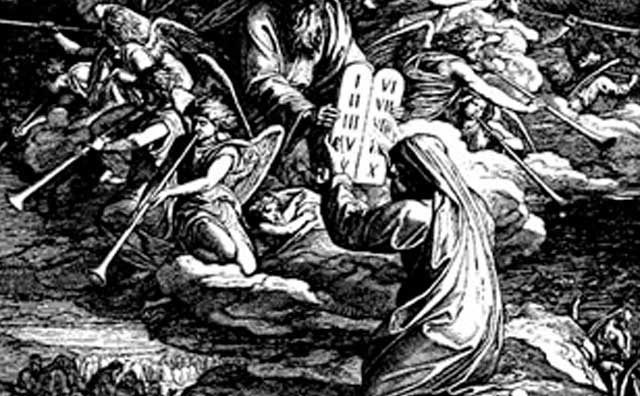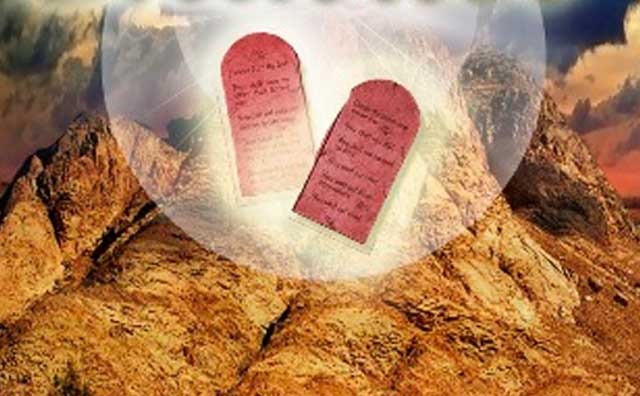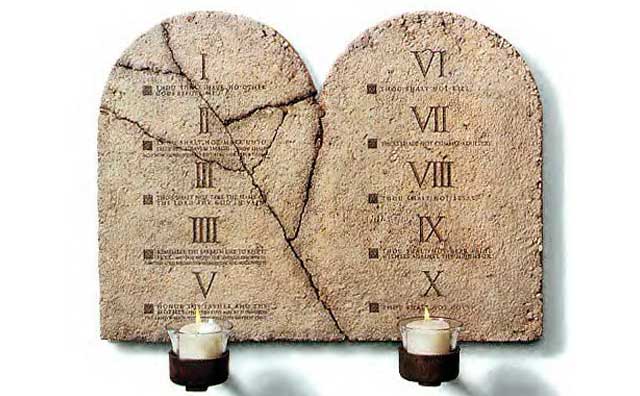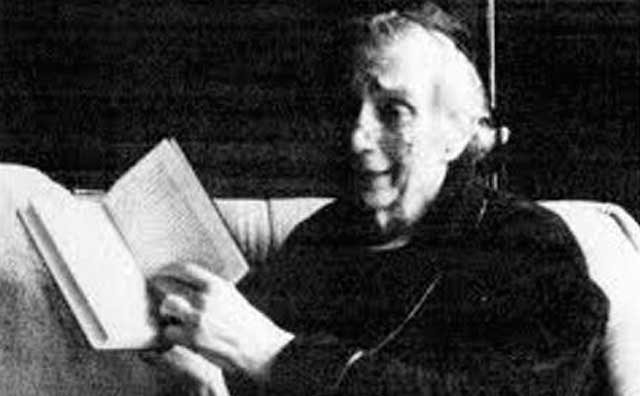Two Tablets for Life. Table bible verses
Comparing the two tablets for life: one contains obligations towards God, the other contains obligations towards the people.
The Torah contains 613 commandments. But on Mount Sinai – the only occasion in history when the Jewish people as a whole had a face to face encounter with God – The Lord chose to emphasize 10.
The first two of the Ten Commandments were heard directly from the mouth of God, without Moses as an intermediary, while the other eight were heard through Moses.
According to many commentators, the first is not really a commandment, but has the nature of an introductory statement to all commandments. But there is a common special denominator that unifies these 10, and sets them apart from all others; Are the only commandments that appear in the “Tables of the Law”, Tablets for life, Table bible verses.
The importance of being inscribed in the tables is explained by Moses as follows:
“The Lord (God) told you his covenant that He commanded you to fulfill, the 10 statements, and inscribed them on two tables of stone.” (Deuteronomy 4:13)
These 10 statements have a double aspect. Apart from being commandments for themselves, like the rest of the 613, they constitute a special covenant between God and Israel. We refer to them in the Pesach Haggadah as the “Two Tables of the Covenant.”, Tablets for life. It is the covenant aspect that we propose to explore in this essay.
The pact
A pact is not a mysterious and creepy bond, but simply an elegant term for a contract. Every contract is an agreement negotiated between two parties. In general, when such an agreement is reached, it is certified and each party receives a notarized copy so that they have a record of their rights and obligations in the contract. In describing the Ten Commandments as a covenant, the Torah informs us that the table bible verses represent a copy of the contractual agreement between God and the Jewish People. The tables we receive at Sinai constitute the notarized copy of Israel.
But this seems like an alarming idea. In what sense can commandments, which are basically orders issued by The Lord, be described as negotiated agreements?
To better understand the contractual aspect of these commandments, let us review the negotiation process that led to its culmination.
The offer
When Moses first ascended the mount, after the Jewish people encamped at his feet, God sent Moses back to the Jews with the following message:
You have seen what I did to Egypt, and I carried them on the eagles’ wings and brought them to Me. And now, if you obey Me and keep My covenant, you will be for Me the most beloved treasure of all peoples, for Mine is the whole world. You will be to Me a kingdom of priests and a holy nation (Exodus 19: 4-6).
This discourse contains the offering of The Lord
Nachmanides explains what is being offered: The whole world belongs to God, but He placed the other nations under the rules of angels. A “beloved treasure” is something you never let escape from your own careful watchfulness. God offered the Jewish people His personal attention. He Himself will attend to the affairs of the Jewish People, rather than deliver them to the jurisdiction of angels as He does with other nations.
But this offer of personal Divine jurisdiction actually contains two parts. Apart from the promise of care in this world, it also offers an entrance into the world to come. Because a precious object never loses its value, and remains forever precious. Someone dear to God, who is eternal, will stay with God for eternity. If Israel accepts God’s offer and becomes his precious object, that immediately extends the deal to the dominion of the eternal.
These two ideas are contained in the two phrases “a kingdom of priests,” a reference to this world, and “a holy nation,” which is a reference to the world to come. Note that the word “holy” in Hebrew always implies separation from the physical. Therefore, a “holy nation” is a nation in a non-physical sense, a nation of another world.
The acceptation
Moses came and called the elders of the people, and set before them all these words which God had commanded him. All the people answered together and said, “All that God has said we will do!” (Exodus 19: 7-8).
This verse describes the acceptance of the Jewish People to the offering of The Lord.
Moses presented the proposition to the elders so that they could circulate among the people, obtain their reactions and deliberate the answer, but the people advanced to this process of deliberation, declaring enthusiastically their immediate and unanimous acceptance with one voice.
The Jews obviously thought this was an excellent offer. They accepted immediately without prior deliberation. But there must be strong conditions involved.
In fact there are – the conditions are the commandments themselves.
To enter into the covenant you must accept the Ten Commandments. But what is so difficult about these commandments? A superficial reading does not show anything controversial or difficult to fulfill.
Logic leads us to a deeper look at these commandments for an answer.
It is immediately apparent that they are divided into two parts. Indeed the Jewish tradition teaches that there are two tablets: 1) one corresponding to the obligations towards God, and 2) another composed of the obligations towards the neighbor. But if we examine them more closely we can see that they are related.
Let us refer to the two tables, for the sake of simplicity, as the table of God and the table of Man, and let us see them in pairs.
I am God / Will not Kill
The first commandment on God’s table is the acceptance of The Lord as our ruler. He brought us out of the bondage of Egypt so that we may become His servants instead of being the servants of Pharaoh. Parallel to this commandment in the Man table, we find the mandate against murder. The implication is clear. The act of murder represents a violation in spirit of the first commandment in the Table of God, Tablets for life, table bible verses.
Whoever sheds the blood of man, by man shall his blood be shed; Because in the image of God He made man. (Genesis 9: 6)
The prohibition against murder is based on the fact that man is the image of God. When you take a human life you are destroying the image of God.
And if a man commits a sin whose sentence is death, he must die and hang it on the gallows. You will not leave his body overnight by hanging, but you will surely bury him that day, for a hangman is an insult to God … (Deuteronomy 21: 22-23)
The Talmud (Sanhedrin 46b) says that murdering a human being is similar to murdering God’s twin brother. You can not imagine a greater violation of the spirit of the first commandment in the table of God.
The second commandment on God’s table is the command against idolatry. In the Table of Man we find the mandate against adultery.
The command against idols is a prohibition on obtaining the gratification of God against His will, obtaining it secondhand. The idolater wants to get a portion of the Divine gratification, but not according to God’s policy. As part of the granting of free will to man, God makes this possible.
The institution of marriage, whose holiness is violated by the sin of adultery, is the gift of God against loneliness. The human symbol of love that extinguishes loneliness is the woman.
The Lord explained the creation of the woman in the following way:
It’s not good for the man to be alone; I will make him a helper corresponding to him. (Genesis 2:18)
God did this by dividing the human being into two, thus curing the existential anguish of loneliness. Both man and woman, share this gift equally, but she is the symbol of Divine healing. In God’s scheme each marriage is formed with the idea that each member of the couple is the complement of the other.
Adultery is to take this Divine gift and go against the politics and desire of God. This cure for human distress was aimed at a different receptor. In this way adultery is similar to idolatry.
You will not swear in vain / you will not steal
The third commandment on God’s table is the prohibition against false oaths, which parallels the prohibition of theft on the Table of Man, table bible verses.
God is the source of all reality. Replacing the reality that God established by a false reality is a perversion of the work of God. The false oath is an affirmation that God is associated with a reality that He did not intend.
Just as God is the source of all reality, He is the source of all gratification. Something destined for Reuben can not support Simon. If God intended it for Reuben, Simon’s appropriation of that is also a perversion of the true reality.
Were it not for the fact that God’s connection with reality is hidden by nature to allow man free will, no one could stretch his hand to take what belongs to another. The hand would stretch and the stolen object would disappear as soon as it got into the wrong hands.
Watch the Shabbat / Give No False Testimony
The fourth commandment on God’s table is the observance of Shabbat. In its parallel in the Table of Man is the prohibition of giving false testimony.
The observance of the Shabbat is a testimony to the creation of God. If God is the creator, He is also the source of all creative power in the world. All that man creates and achieves is actually a channeling of God’s creative power. If the world were not designed to conceal the presence of God, to grant man free will, the laws of Shabbat would be an exact representation of creation. Only God creates; Man hardly enjoys the gratification of God’s creative power.
Failure to observe Shabbat is an act of false witness. This false testimony affirms that there is a world not created, without purpose and without final destiny.
Raising false witness against our neighbor puts our neighbor in a world that was not created by the channeling of God’s creative power. The false witness created this alternative universe in his testimony. Therefore, the lack of observance of Shabbat and the lifting of false testimony are exact parallels.
Honor Your Parents / You Will Not Covet
The last commandment on God’s table is to respect our parents. Parallel to this commandment, in the man’s table is the prohibition against coveting the neighbor’s wife or anything belonging to your neighbor.
Instead of starting with God’s table and then moving on to man’s, let’s take the opposite path in this case.
Ibn Ezra asks a provocative question about the prohibition of coveting: How is it possible to command a person not to desire something that is inherently desirable?
We can easily understand the prohibition of materializing illicit desires in real life, but these prohibitions with respect to materialization are already mentioned in the first four prohibitions of the Table of Man. How can we relate to this prohibition against desire itself?
Ibn Ezra responds with a metaphor. By the rules of human nature, the peasant greed the wife of his peasant companion and not the daughter of the king. When he sees the princess pass in his carriage, even if he finds her beautiful, he does not greed her. She is beyond reach. Any thoughts you may have about her are more than realizable desires, pure fantasies.
If a person is properly oriented in the world, everything that belongs to another person is in the same relation with him as the unreachable princess to the peasant. God gives everyone the things they need to have to successfully lead their lives. It is not the circumstances that determine who each person has; But is determined by Divine decisions, which are based on rational considerations about what is beneficial.
If the things that I desire are within my reach, then I have the right to assume that God put them there on purpose, because I can actually use them to achieve the goals He set for me. If they are not within my allowed reach, I must conclude that they are not good for me to have and my only relationship with them is the harmless fantasy world of my imagination.
Coveting things that belong to other people is the clearest sign of danger that life is out of focus. In the world according to the Ten Commandments, each person is unique in the eyes of God; Each person is a partner in the covenant. Each of these partners lives in their own world, surrounded by the things they need specifically to test their commitment to the covenant partnership relationship, and to help them grow in their full potential as a partner with God.
The world is not a jungle in which we all compete for the same prize, which correctly belongs according to the law of the jungle to the fastest and able. In a world like that, whatever else I have, is a clear possibility for me too, especially if I consider myself more appropriate. In the jungle world it is allowed to covet anything whatever. As long as you take things out of the hands of your current owner in ways that society does not forbid, you’re not doing anything wrong. The person who covets is living in the wrong world.
Returning to the table of God, Tablets for life, table bible verses, we find the same idea expressed in the command to honor the parents. This commandment has nothing to do with conventional respect and gratitude. For most of us who have had the good fortune of being raised in normal, loving homes, feelings of gratitude toward our parents are an inseparable part of our worldview. There is no need to strengthen human nature through commandments. But the honor referred to here is a totally different subject.
Honor is assigned based on what you consider important in life, not on the basis of gratitude.
Each person feels the attraction of the challenges of the world waiting for us out there. The appeal of new ideas and different lifestyles is a very powerful force among all of us. We tend to treat the world of our parents condescendingly, as if it were out of date or old. We feel the need to open our wings and fly in new directions.
But the world in which God has placed us is the world of our fathers. Three companions join forces in the creation of a person: God, the father and the mother (Talmud, Nidá 31a). God does not choose his companions at random. If He selected these particular companions, He wants the child to be subject to His world. The values transmitted by our parents create the background of our life, selected by God himself. Parents should be honored, not merely loved.
Coveting what belongs to another and not honoring our parents have the same common source, the belief that one is in the wrong world.
In conclusion
The prevailing theme in the tables is that it is impossible to separate our interactions with other people from our interactions with God. In the world of the covenant, where Israel becomes a people of priests and a holy nation, the holiness of God is spread to encompass all aspects of life. There is no escape from Him.
The covenant is not about obedience to the orders of God, or the adoption of certain customs and practices. The covenant is about the will to inhabit a common and shared world with God, where every aspect and relationship in life is influenced by the fact that it takes place in His encompassing presence. For someone who wants to live in their own space, the pact is an intolerable burden.
It turns out that God’s offer to make us a people of priests and a holy nation is a double-edged sword. For we must also be willing to become a people of priests and a holy nation. This means inhabiting a world where it is impossible to draw distinctive lines between areas designated as sacred, and those that can be considered secular or common.
We become those sacred priests only by allowing the two tables of the law, Tablets for life, to converge into one covenant structure. The conditions related to the offering of God are the chains that bind the secular and the sacred to form a single coherent life.





















